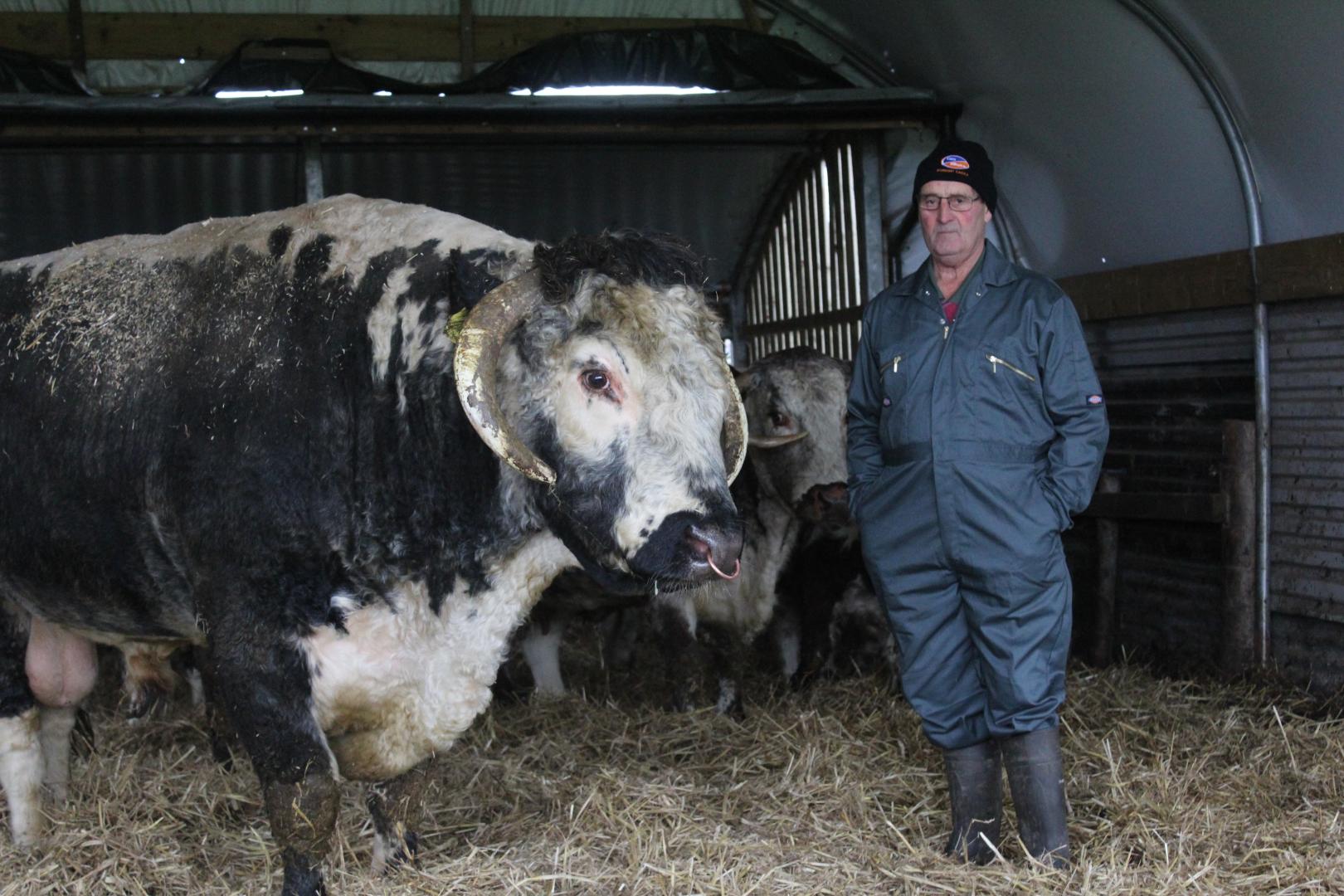MOST livestock farmers have a lifelong interest in their animals and none more so than Denis Metcalf.
He found that looking out on empty fields did not suit him when he “retired” to a smallholding in Marwood.
In a short time they were being grazed by a pedigree herd of longhorn cattle.
Just 16 acres make up Garford Meadows, but every square inch of grass has been used to the maximum, since Mr Metcalf’s Garford herd has grown from just three cows with calves in 2012, to more than 30 females.
Longhorn stock bull Dunstall Neptune services the herd and the aim is to calve in April. All the male calves are left entire and an average finishing date of 14 to 18 months is achieved. The calves are not creep-fed while at grass, but their diet is supplemented for the last 12 months with bought-in concentrate feed and straw. A mature longhorn cow will weigh about 700kgs, he points out, while finished cattle are taken to roughly 600kgs.
“My original intention was to set up a small herd of beef shorthorns,” explains Mr Metcalf. “However when I attended a breed sale the prices started at figures which were at the top end of my budget.
“But I met a herd owner from Northumberland who invited me to look at his longhorns and that is where my association began.
“It is an ancient breed that at one point went into such sharp decline that it almost became extinct, but longhorns can now be found all over the world. It is appreciated for its hardiness and its ability to adapt to rough grazing. Their temperament is quiet and friendly in general, but of course it has to be kept in mind that the horns are sharp and they have the potential to cause damage.”
The width of the horns makes it impractical to use a standard crush for close handling of the cattle, he stresses.
“I have adapted a crush by tapering the bars outward, so that it can be used safely; the cattle are very adept at negotiating narrow spaces. I also have purpose-made yokes that have been installed in the housing. This year it has been so wet that the herd has been brought inside six weeks earlier than usual, which will have increased the production costs.”
A member of the Longhorn Cattle Society, Mr Metcalf has hosted a farm walk for fellow enthusiasts and has taken several titles for individual cattle in the annual herds competition. These include awards for the best junior bull and best senior cow across the north-east and Scotland. He attended this year’s Northumberland Show with a trio of young cattle, taking a third, a fifth and a seventh place among some stiff competition. There are plans to attend some of the local shows in 2020.
Mr Metcalf and his wife, Val, retired to Marwood in 2011, converting a barn that had belonged to his grandparents. He himself was brought up on a Raby Estate farm on the Moor Road near Staindrop, where the family milked a herd of dairy cows. Upon his marriage, Mr Metcalf moved his family to a small unit at Bowes Cross, where he spent more than a decade farming in a family partnership.
Following his parents’ retirement, he took over the Raby Farm tenancy and at one stage was milking a herd of 120 black and whites. He also kept 500 North Country Mule ewes and reared beef calves from the dairy herd, while Mrs Metcalf had a small flock of Shetland sheep. Sadly, the livestock were victims of the foot-and-mouth crisis and the couple did not re-stock.
As the herd size has increased at Garford Meadows, sheep numbers have declined from a peak of 60 ewes, to just a couple of dozen North Country Mules and Rylands.
Mr Metcalf admits that he is not keen on parting with his female progeny, but acknowledges that his smallholding is running at full capacity.
“I will be selling some pedigree heifers for breeding in the near future,” he says. “Prices for beef cattle in general have been unrewarding, and therefore we are currently looking into selling our home-produced beef in boxes direct to customers. The marbling of the meat gives it a lot of flavour and keeps it moist while cooking.
“My affiliation with Longhorn cattle came about by accident, but I have not been disappointed and there is growing interest in the breed in the North of England. The herd makes an attractive sight and we quite often have passers-by stopping their cars to take photos of the cattle grazing by the roadside.”



